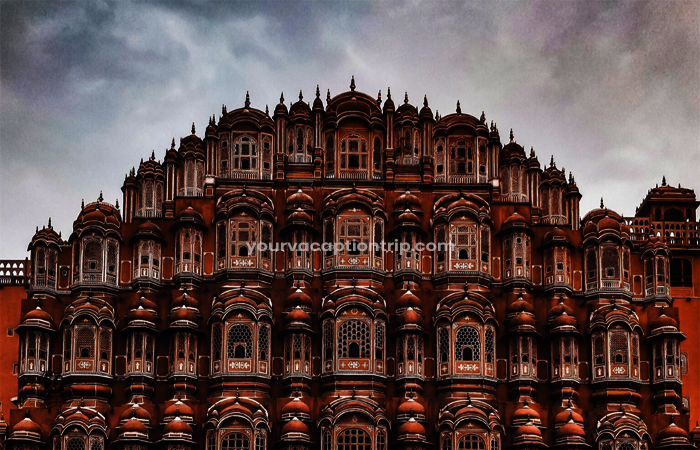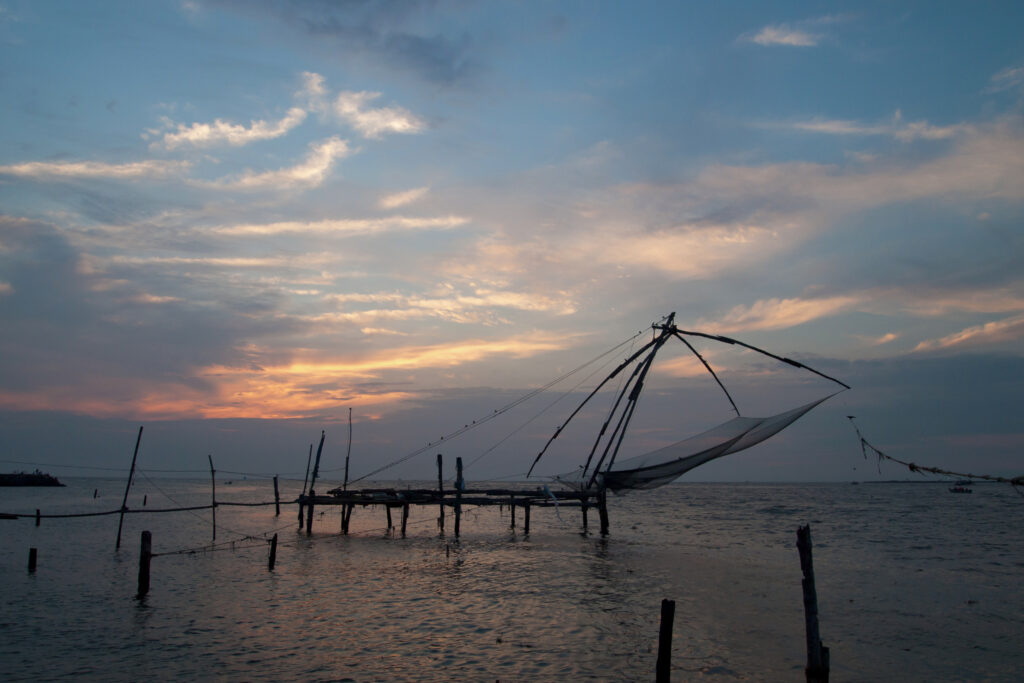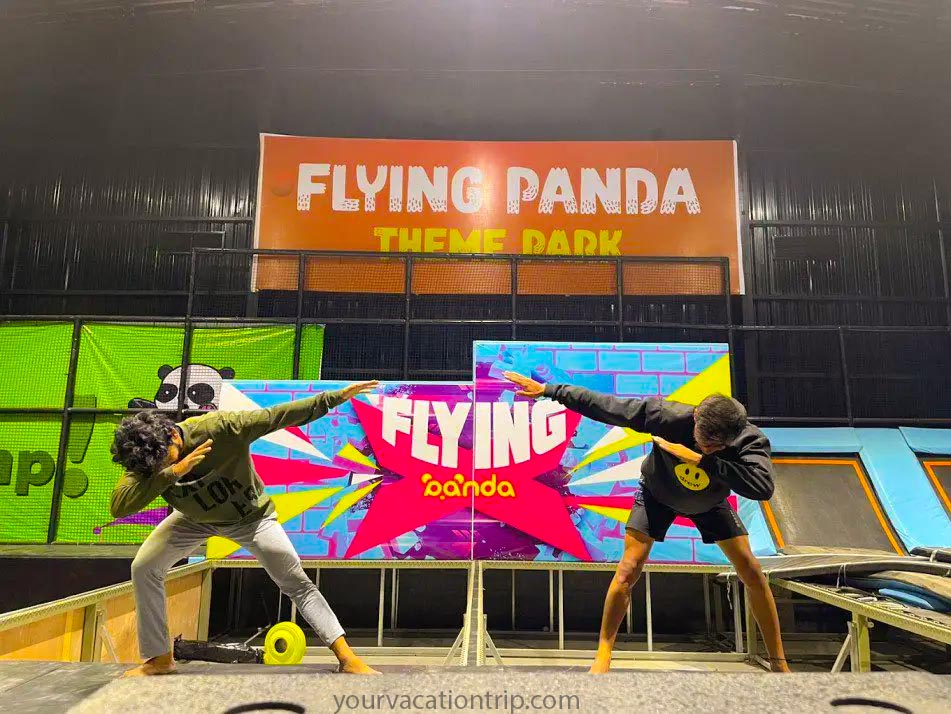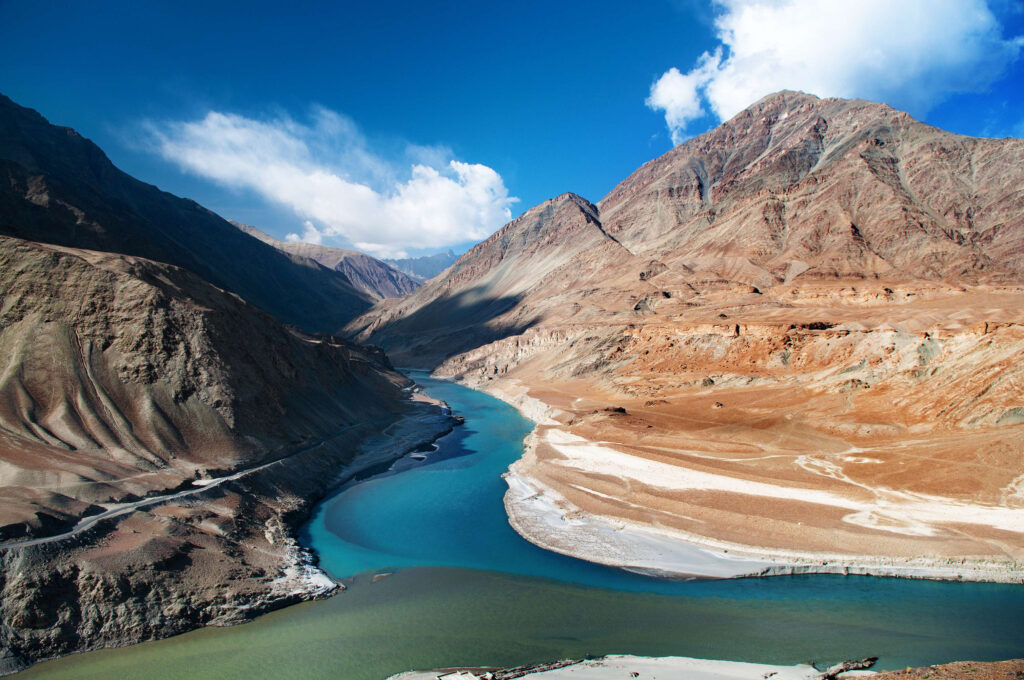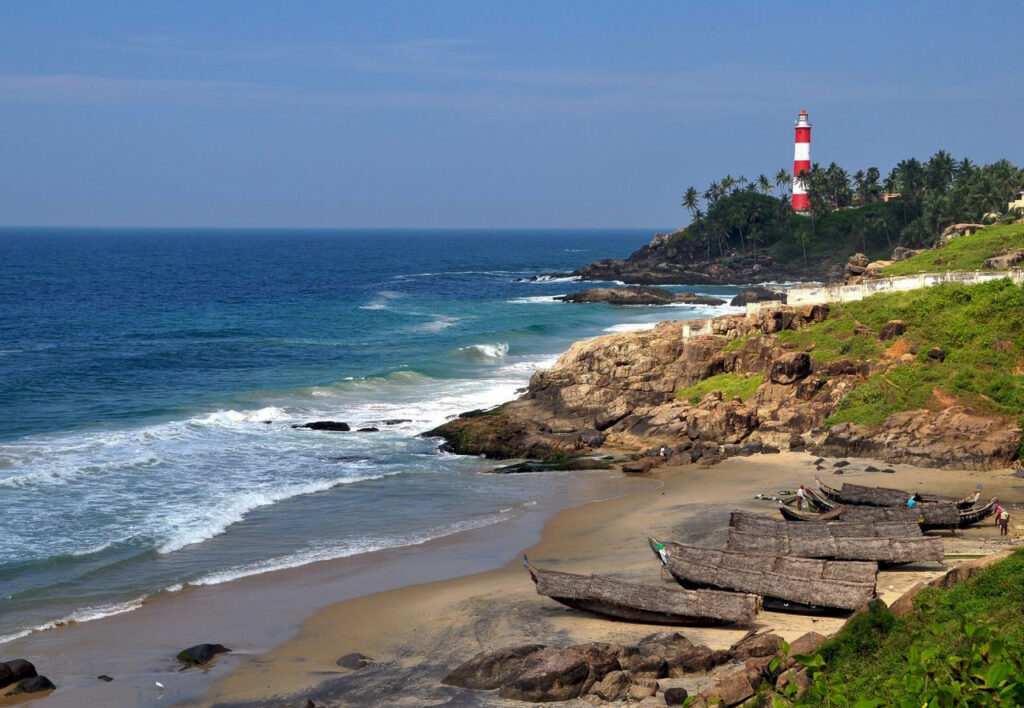Jaipur, often referred to as the “Pink City,” is the capital city of the Indian state of Rajasthan. famous for its majestic forts, vibrant markets, rich cultural legacy, and colorful architecture. Jaipur is a beautiful destination that offers a unique combination of history, tradition, and modernity. Here are some Best places visit in Jaipur Rajasthan with timing and fees.
Best Places to Visit in Jaipur
1. Hawa Mahal, Jaipur
Hawa Mahal, also known as the “Palace of Winds,” is an iconic structure found in the soul of Jaipur, Rajasthan, India. Situated in the bustling Pink City, it stands as a magnificent testament to the city’s rich history and architectural magnificence.
Click here to get location of hawa mahal
Address: Hawa Mahal Rd, Badi Choupad, J.D.A. Market, Pink City, Jaipur, Rajasthan 302002

Hawa Mahal Opening Timing and Entry Fees :
Opening time
Hawa Mahal opens daily. It does not close on public holidays or Sunday.
Time open: 9:00a.m. – 4:30p.m. daily
Entry Fees for Hawa Mahal
Local Indians: Rs. 10
Foreigners: Rs. 50
Tips For Tourist :
- It is best to see Hawa Mahal early in the day as you can take a look around peacefully. Later into the day, the streets get packed.
- The museum is closed on Fridays. So, if it is best to plan a trip on other days so that you don’t miss out on the museum.
- Relaxing shoes are a must as you will have to walk quite a bit and even climb many stairs.
- There are many low walls. So, walk carefully and attach to safety instructions.
- Take your water bottles with you.
How to Reach Hawa Mahal :
Hawa Mahal is located in the middle of Jaipur City and can be reached via bus, auto-rickshaw, taxi or car from the capital city.
More Place to visit near Hawa mahal
- City Palace
- Jantar Mantar
- Ram Nivas Garden
- Govind Ji temple
- Chand Pol
Interesting facts about Hawa Mahal
Certainly! Here are some impressive facts about Hawa Mahal:
- Purpose and Design: Hawa Mahal was built in 1799 by Maharaja Sawai Pratap Singh, and its unique design was specifically intended to serve the royal ladies of the palace. The palace was constructed as an extension of the Zenana (women’s chambers) of the adjacent City Palace. The purpose of its design was to provide the royal women with a vantage point to watch the city’s activities and processions without being seen by the public.
- Honeycomb-like Facade: The most distinctive quality of Hawa Mahal is its intricate honeycomb-like facade. The structure consists of five stories, and each story has a row of small windows, known as jharokhas. These jharokhas, totaling 953 in number, are beautifully carved and decorated with lattice work. The design allows cool currents to pass through, making natural ventilation and keeping the interior cool during the hot summers of Rajasthan.
- No Interior Courtyard: Unlike many palaces and forts in Rajasthan, Hawa Mahal does not have a central courtyard. This is because the palace was primarily meant for the royal women’s observation purposes rather than for long-term residence. The absence of a courtyard allows for a more compact and vertically built structure.
- Inspired by Lord Krishna’s Crown: It is believed that the unique shape of Hawa Mahal’s facade, comparing Lord Krishna’s crown, was inspired by the Maharaja’s devotion to Lord Krishna. The design reflects the Rajputana architectural style, which often drew inspiration from religious symbolism.
- Jaipur’s Tallest Building of Its Time: When Hawa Mahal was constructed, it stood as the tallest building in Jaipur. Its height was deliberately kept shorter than the neighboring City Palace to maintain a sense of reverence for the royal residence.
- Spectacular Views: From the upper floors of Hawa Mahal, visitors can enjoy spectacular panoramic views of the cityscape, including the bustling streets, markets, and the majestic Nahargarh Fort in the distance. The vistas provide a unique perspective on Jaipur’s architectural landscape.
- Preservation and Restoration: Over the years, Hawa Mahal has experienced several conservation and restoration efforts to maintain its architectural integrity. The most recent restoration was taken out in 2014 to repair and maintain the structure while preserving its historical charm.
People Also Ask About Hawa Mahal :
What are the visiting hours of Hawa Mahal?
9:00 am to 4:30 pm; every day
Can we go inside Jal Mahal?
Visitors are not allowed to enter the Palace.
Does Hawa Mahal have entry fee?
Rs. 50 for Indians and Rs. 200 for foreigners are the entry fees.
2. Amer Fort Jaipur :
Amer Fort, also known as Amber Fort, is a majestic fortress located in Amer, a small town situated about 11 kilometers (7 miles) from Jaipur, the capital city of Rajasthan, India. Perched on a hilltop, Amer Fort showcases the majesty and architectural brilliance of the Rajput era.
Also Read : Top 10 Forts in INDIA https://www.yourvacationtrip.com/top-10-forts-in-india/
Click here to get location of amer fort jaipur
Address : Amber Palace, Devisinghpura, Amer, Jaipur, Rajasthan.

Amber Fort Jaipur Timings
Amber Fort opens everyday at 8:00 am – 5:30 pm
Amber Fort Jaipur Entry Fees
- 25 Rs per person for Indians
- 10 Rs per person for Indian Students
- 550Rs per person for Foreign Tourists
- 100 Rs per person for Foreign Students
- 200 Rs per person for Light Show in English
- 100 Rs per person for Light Show in English
- 1100 Rs per couple for Elephant Ride
Things to Do in Amer Fort :
- Take an Elephant ride around the fort.
- Enjoy the Light and sound show at night.
- Undertake a trekking trip to the surrounding hills
- Visit the Museums and Gardens inside the fort.
- Enjoy puppet shows and classic songs.
- Visit temples and old havelis.
- Take the classical dance programs coached in Sukh Niwas, at night.
- Experience fine, multi-cuisine dining and enjoy continental flavors to local Rajasthani delicacies.
Amer Fort Light and Sound Show Entry Fee
A fifty-minute-long light and sound show are held every evening at Amer Fort showcasing the history of Jaipur and the fort.
It aims to revive the state’s rich
history, tradition, and culture. The exhibition celebrates local
legends, folklore, and folk music. Photography, video, or audio
recordings of the performance are prohibited.
Light and Sound Show fee: 295 Rs
Duration: 52 Min.
Timings:
Oct to Feb –6:30 PM (English) and 7:30 PM (Hindi)
March to April: 7:00 PM (English) and 8:00 PM (Hindi)
May to Sep – 7:30 PM (English) and 8:30 PM (Hindi)
History of Amer Fort Jaipur :
Amer Fort, originally built by the Meena tribes, was later expanded by Rajput rulers. It was constructed in the 16th century by Raja Man Singh I, a trusted general of Emperor Akbar. The fort served as the capital of the Kachwaha Rajputs until Jaipur was founded as the new capital. Over the centuries, various rulers made additions and modifications to the fort’s architecture. Today, Amer Fort stands as a wonderful testament to the valor, artistic excellence, and architectural finesse of the Rajput dynasty.
3. Jal Mahal, Jaipur :
The mesmerizing architectural wonder Jal Mahal, sometimes Knows as the “Water Palace,” is situated in Jaipur, the capital city of the Indian state of Rajasthan. Jal Mahal, one of Jaipur’s most well-liked tourist sites, is a special fusion of Rajput and Mughal architectural styles and is situated amidst the tranquil waters of the Man Sagar Lake.
Address : Address: Jal Mahal, Amer, Jaipur, Rajasthan
Click here to ge location of jal mahal jaipur

Jal Mahal Jaipur Timings :
Jal mahal open Everyday at 6:00 am – 6:00 pm
Entry Fees for Jal Mahal : Jaipur
The entry fee for Indian Rs 10 and for foreigner Rs 50.
Nearby famous places :
- Gems Galaxy 1.9 km away
- Amber Palace 5.8 km away
- Hidden Jaipur 2.4 km away
- Hawa Mahal – Palace of Wind 25 minutes away
- Jantar Mantar – Jaipur 1.6 km away
- Diwan-e-Khas Hall of Private Audience 32 minutes away
- Mukesh Art Gallery 3 km away
- Rajasthan Cultural Tours 1.8 km away
What is Special in Jal Mahal ?
- Underwater Architecture:
- Man-made Lake:
- Maharaja’s Hunting Lodge:
- Architectural Style:
- Conservation Efforts:
- Birdwatcher’s Paradise:
- Illumination at Night:
- Restricted Entry: While admiring the Jal Mahal from a distance and taking in the beautiful scenery, it is not permitted to enter the palace itself. This precaution has been taken in order to safeguard the lake’s delicate environment and maintain the palace’s historical integrity.
- Bollywood Connection:
- Tourist Attraction:
How to reach Jal Mahal :
- By Air:- International airport is located at a distance of 18.2 km.
- By Railway:- Jaipur Railway Station is the nearest to Jal Mahal which is situated at a distance of 6.9 km.
- By Metro:- The nearest metro station to Jal Mahal is Chandpole Metro Station which is situated at a distance of 5.9 km.
- By Bus:- The nearest bus stand to Jal Mahal is Sindhi Camp Bus Stand which is at a distance of 5.3 kms.
4. City Palace, Jaipur
In the centre of the city, there is a stunning royal complex called the City royal in Jaipur. It is a shining illustration of how Rajput and Mughal architectural styles may coexist. The palace, which covers a sizable area, features an extraordinary fusion of yards, gardens, palaces, and museums, giving tourists a look into the magnificence and wealth of the royal age.
Click here to get location of City palace
Address : Jaleb Chowk, Near Jantar Mantar, Tripolia Bazar, Gangori Bazaar, J.D.A. Market, Kanwar Nagar, Jaipur, Rajasthan

City Palace Jaipur Timings :
Everyday at 9:30 am – 5:00 pm (Day Visit)
7:00 pm – 10:00 pm (Night Visit)
City Palace Jaipur Entry Fees :
*For Indian Local
| Museum | Composite | Museum at Night | Royal Grandeur | Royal Splendor | |
| Adult | 200 Rs | 300 Rs | 500 Rs | 1500 Rs | 3000 Rs |
| Child (5-12 Yr) | 100 Rs | 200 Rs | 250 Rs | 1000 Rs | 1500 Rs |
| Adult (Senior/ Defence) | 100 Rs | 200 Rs | 380 Rs | – | – |
*For Foreigners
| Composite | Museum at Night | Royal Grandeur | Royal Splendor | |
| Adult | 700 Rs | 1000 Rs | 2000 Rs | 3500 Rs |
| Child (5-12 Yr) | 400 Rs | 500 Rs | 1500 Rs | 2000 Rs |
| Adult (Senior/ Defence) | 430 Rs | 780 Rs | – | – |
Special Things About City Palace Jaipur :
- Blend of Architectural Styles:
- Exclusive Royal Residence:
- Pritam Niwas Chowk:
- Unique Museums:
- Astonishing Artwork:
- Spectacular Views:
- Festivals and Cultural Events:
Things to Enjoy Inside City Palace :
- The gates of City Palace/ Pitam Niwas Chowk
- Mubarak Mahal
- Chandra Mahal
- The armory
- Bagghi Khana
- Diwan-e-Khaas
- Diwan-e-Aam (Sarvato Bhadra)
- Govind Dev Ji Temple
5. Jantar Mantar – Jaipur
Jantar Mantar is a remarkable astronomical tower located in Jaipur, the capital city of the state of Rajasthan, India. It is an architectural wonder that stands as a testament to the scientific prowess of old India. The Jantar Mantar in Jaipur is one of the five observatories built by Maharaja Jai Singh II, a renowned Rajput king, and astronomer, during the 18th century.
Click here to get location if Jantar Mantar
Address : Gangori Bazaar, J.D.A. Market, Kanwar Nagar, Jaipur, Rajasthan

Jantar Mantar Jaipur Entry Fee :
- 50 Rs for Indians
- 15 Rs for Indian Students
- 200 Rs for Foreign Tourists
- 100 Rs for Foreign Students
Jantar Mantar Jaipur Timings :
Jantar Mantar Opens Everyday at 9:00 am – 5:00 pm
Highlights of the Jantar Mantar’s in Jaipur
- Chakra Yantra – To denote four specified times of the day that also conforms to the other major observatories in the world viz. Greenwich in UK, Saitchen in Pacific, Zurich in Switzerland, and Noke in Japan)
- Dakshin Bhitti Yantra– Altitude and Meridian measures along with distances between celestial bodies
- Digamsha Yantra– To estimate the time of sunrise and sunset.
- Disha Yantra– To showcase the guides and measurements.
- Dhruva Darshak Pattika- locating and observing the pole star with respect to other celestial bodies
- Jai Prakash Yantra– provides an inverted image of the sky, calculates altitudes and allows the observer to move inside the instrument as well as calculate hour angles.
- Kapila Yantra– calculates the coordinates of celestial bodies.
- Kanali Yantra
- Kranti Vritta Yantra– latitude and longitude of heavenly bodies.
- Laghu Samrat Yantra– smaller sundial at Jantar Mantar and inclined at 27 degrees.
- Misra Yantra– compilation of 5 different instruments.
- Nadi Valaya Yantra– measures time in less than a minute. The two instruments in this yantra face the northern and southern hemispheres, respectively.
- Palbha Yantra
- Rama Yantra– altitude measurement of the sun.
- Rashi Valaya Yantra– tracking and location of all 12 constellations of stars, depicting different zodiac formations.
- Shastansh Yantra– A unique 60-degree arc instrument built in the meridian plane with a slightly dark chamber. It illuminates at noon every day, with the light passing through a pinhole in the chamber and thus helps in calculating the diameter of the sun, declination and distance.
- Unnatamsa Yantra– Measurement of the celestial bodies.
- Vrihat Samrat Yantra– At 27 metres, the worlds’ biggest sundial is known to measure time at an interval of every 2 seconds, local time.
- Yantra Raj Yantra– Used to calculate the Hindu calendar, this gigantic astrolabe is thought to be one of the largest in the world.
Trip Plan For Jaipur :
Here’s a suggested itinerary for your trip to Jaipur:
Day 1:
- Morning: Arrive in Jaipur and check into your hotel.
- Afternoon: Visit the Amber Fort, located on a hilltop. Explore the magnificent architecture, intricate carvings, and stunning views of the surrounding landscape. You can opt for an elephant ride or a jeep ride to ascend to the fort.
- Evening: Explore the local markets of Jaipur. Visit Johri Bazaar and Bapu Bazaar to shop for traditional Rajasthani handicrafts, textiles, jewelry, and souvenirs. Don’t miss trying the famous street food of Jaipur, such as pyaaz kachori and lassi.
Day 2:
- Morning: Visit the City Palace, a magnificent complex that houses palaces, museums, and courtyards. Explore the opulent architecture and learn about the rich history of the Rajput dynasty.
- Afternoon: Explore the Hawa Mahal, also known as the Palace of Winds. Admire its unique façade with numerous windows and screens. Visit the nearby Jantar Mantar, an astronomical observatory built in the 18th century.
- Evening: Enjoy a traditional Rajasthani dinner at Chokhi Dhani, a cultural village that offers an immersive experience of Rajasthani music, dance, puppet shows, and authentic cuisine.
Day 3:
- Morning: Take a day trip to the superb Jaigarh Fort. Explore the extensive fortifications, the world’s largest cannon on wheels, and enjoy panoramic views of the Aravalli hills.
- Afternoon: Visit the Albert Hall Museum, located in the heart of Jaipur. Admire the vast collection of artifacts, including textiles, sculptures, paintings, and weaponry.
- Evening: Explore the vibrant markets of Jaipur once again or relax at a rooftop restaurant and enjoy the views of the city.
Day 4:
- Morning: Visit the Nahargarh Fort, located on the Aravalli hills. Enjoy the scenic drive to the fort and explore the fortifications, gardens, and viewpoints.
- Afternoon: Visit the famous Jal Mahal, a palace located in the middle of Man Sagar Lake. Take photographs and enjoy the serene ambiance.
- Evening: Experience a traditional Rajasthani folk dance and music performance at a cultural center or attend a puppet show depicting Rajasthani tales.
Day 5:
- Morning: Visit the Amer or Anokhi Museum of Hand Printing. Learn about the traditional art of block printing and witness artisans at work.
- Afternoon: Explore the colorful and bustling markets of Jaipur. Visit the famous Bazaars of Jaipur, such as Tripolia Bazaar and Chandpole Bazaar, to shop for textiles, jewelry, handicrafts, and spices.
- Evening: Enjoy a leisurely walk in the beautiful Central Park or visit one of the city’s rooftop cafes to savor the panoramic views of Jaipur.
Please note that this itinerary can be customized based on your interests, the duration of your trip, and the operating hours of the attractions. It’s always a good idea to check the latest information, such as opening hours and any COVID-19 restrictions, before your visit. Enjoy your trip to Jaipur!
Famous Places to visit in Jaipur :
- Amber Fort (also known as Amer Fort):
- Hawa Mahal:
- City Palace:
- Jantar Mantar:
- Nahargarh Fort:
- Jaigarh Fort:
- Albert Hall Museum:
- Birla Mandir:
Famous Food of Jaipur Rajasthan :
- Dal-Bati-Churma:
- Laal Maas:
- Ghewar:
- Pyaaz Kachori:
- Mawa Kachori:
- Mirchi Bada:
- Rajasthani Thali:
- Kulfi:
People also ask :
Which is the No 1 tourist places in Jaipur?
Hawa Mahal
Which is the best time to visit Jaipur?
October to March is the best time to visit the pink city.
How far is Udaipur and Jaipur?
| Aerial Distance | 327Km |
|---|---|
| Road Distance | 394Km |
Photo Gallery of Jaipur Places





